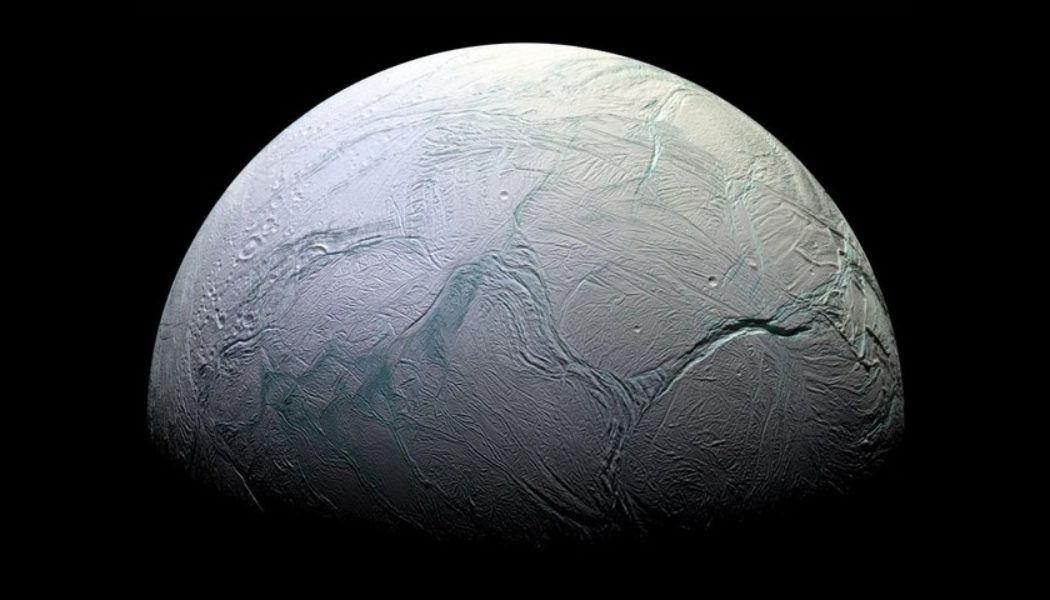
After NASA‘s Cassini spacecraft discovered a surprisingly large amount of methane — along with a relative high concentration of dihydrogen and carbon dioxide molecules — in the plumes of Saturn’s moon, Enceladus, a study published in Nature Astronomy concludes that the high levels of gas cannot be explained by known geochemical processes.
“We wanted to know: Could Earthlike microbes that ‘eat’ the dihydrogen and produce methane explain the surprisingly large amount of methane detected by Cassini?” said Régis Ferrière, University of Arizona biologist and one of two lead authors of the study, in a statement.
Past studies have proven that Enceladus is capable of supporting life with a subsurface ocean covered by a layer of ice and containing a source of warmth. Additionally, researchers have also drawn comparisons between the hydrothermal vents on Earth’s ocean floor and Enceladus’ plumes, where the Saturnian moon’s ocean is reacting with rocks and potentially providing a source of chemical energy.
In lieu of challenging, deep-dive missions, which Ferrière said are “not in sight for several decades,” the authors applied mathematical models combining geochemistry and microbial ecology to evaluate Cassini’s methane data. “They conclude that Cassini’s data are consistent either with microbial hydrothermal vent activity, or with processes that don’t involve life forms but are different from the ones known to occur on Earth,” the university reported.
Their research does not confirm that life exists on Enceladus, but it does say that microbes are one possible explanation for the high amounts of methane. Further research will be necessary in order to determine whether life beyond Earth exists on Saturn’s moon.
For more extraterrestrial developments, check out NASA’s new atomic clock that might just transform the future of deep space exploration.









